Following comprehensive renovation work that fully complied with the restrictions imposed by the Superintendency of Fine Arts, Palazzo Salviati Cesi Mellini has reopened as Six Senses Rome, the global luxury accommodation brand’s first hotel in an Italian city.
The historic building in the heart of the Eternal City now combines storied charm with the finest traditions of international hospitality. During the complex renovation process, the venerable essence of the building was preserved and its classical features were consummately complemented by contemporary, eco-sustainable additions designed by the architect Patricia Urquiola.
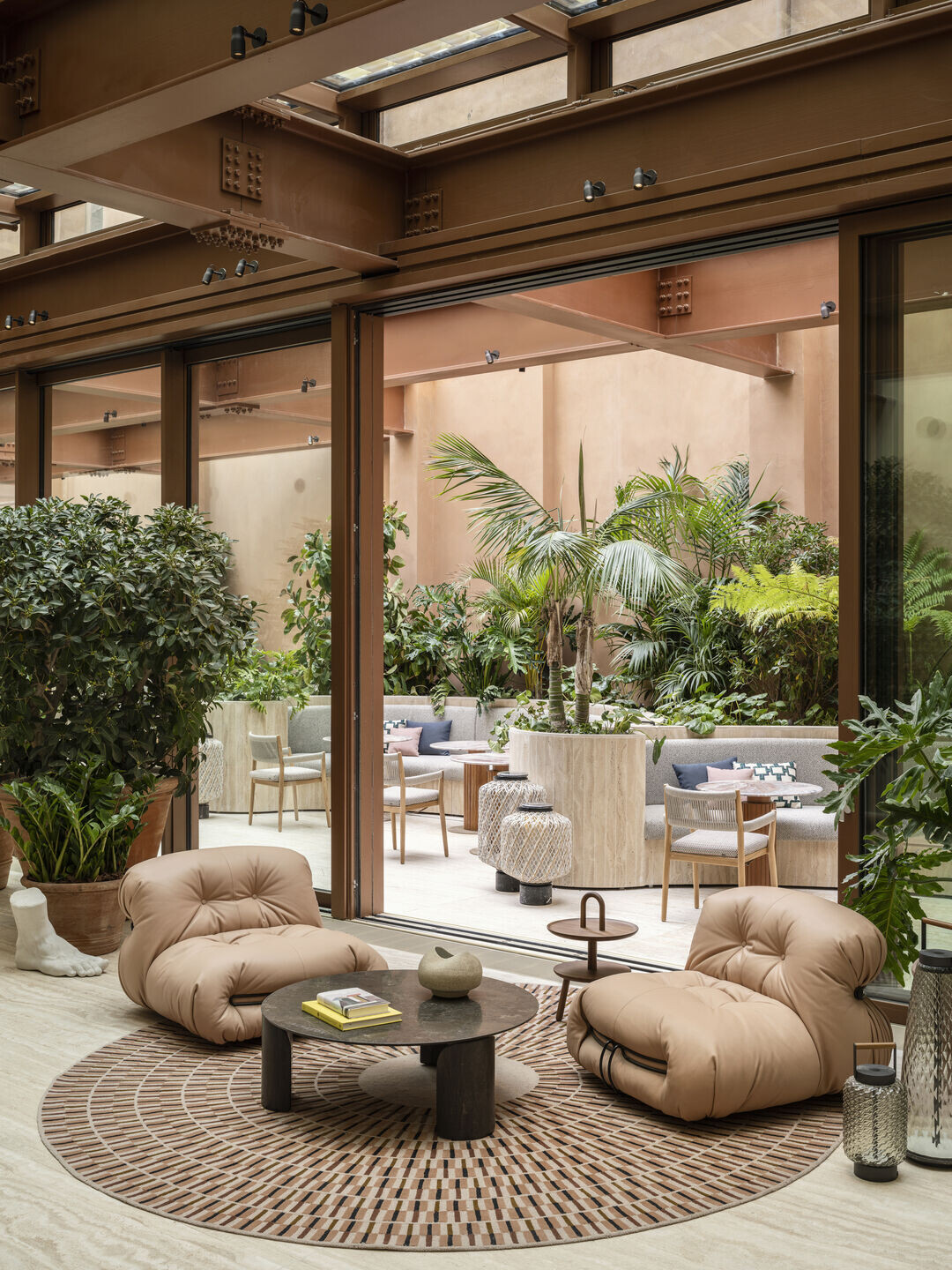
Six Senses Rome in Palazzo Salviati Cesi Mellini is a real treasure trove in truly unique historical surroundings. Guests are greeted by a monumental marble staircase adorned with 600 columns. Natural light floods through a skylight above it onto the flights leading to the different floors.
The reception, public areas, Restaurant-Café-Bar and spa are all embellished with Margraf marble and natural stones ranging from terrazzo to huge amounts of Travertino Romano Classico, a local material in Rome.
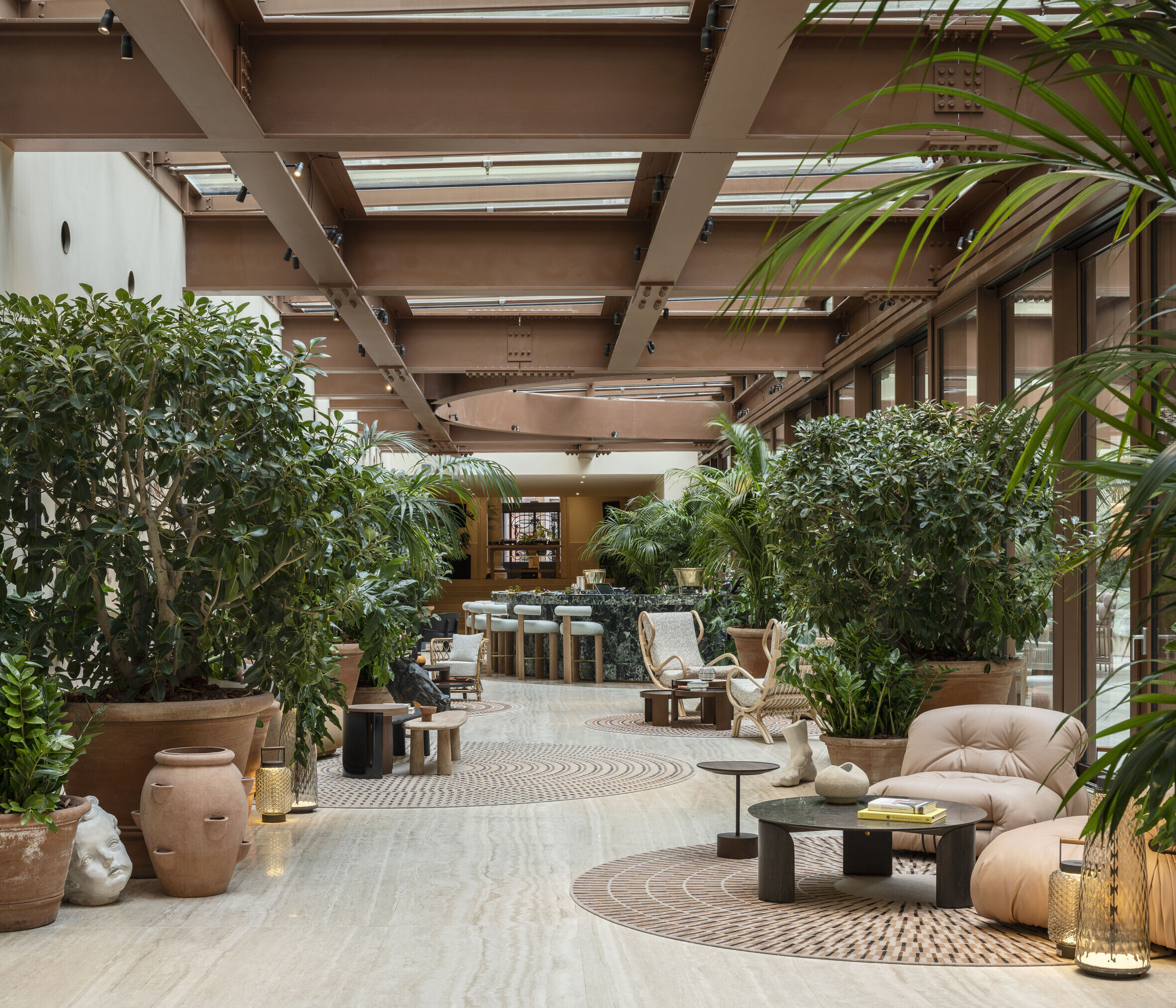
The spa in the basement is an enchanting place inspired by ancient Roman baths, where memories of ancient rituals are fused with high-tech and high-touch treatments such as biohacking, sound therapy, body cocoons and breathing exercises.
The Travertino-clad walls of the tepidarium feature fine bas-relief laurel leaf decorations inspired by the myth of Apollo and Daphne, which were produced using water-jet cutting. The terrazzo flooring contains chips of Cipollino Verde marble and calls to mind ancient Roman architectural traditions.
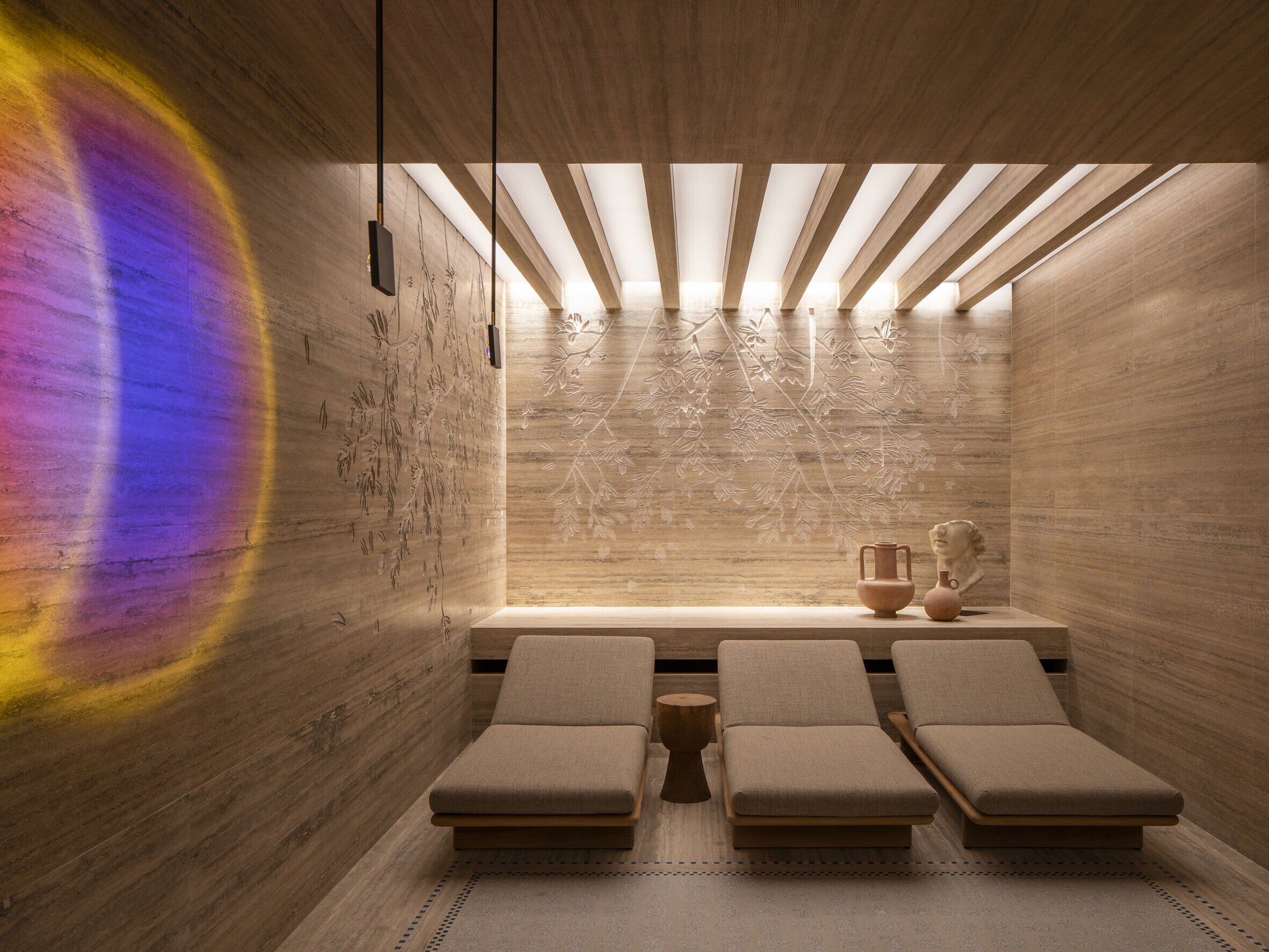
Other eye-catching elements in the Roman baths circuit include the colossal shaped Travertino doorways, Travertino cladding with a ribbed finish, exquisite artistic mosaic inlays and a one-piece basin made of Cipollino Verde marble.
The combination of marble’s unique properties and an unparalleled design, consulting and laying service mean that Margraf can play a crucial role as a strategic partner for international architects, interior designers and contractors who want to create not just peerless buildings but highly distinctive, exclusive developments.
More than just a company, Margraf is also a team of innovators who have chosen to defy the rules of marble. With its 3D coverings, parabolic shapes, elimination of waste, computer-aided design and CNC machining, it promotes constant dialogue between materials and ingenuity. Rather than taking the place of craftsmanship, its innovation creates new opportunities.
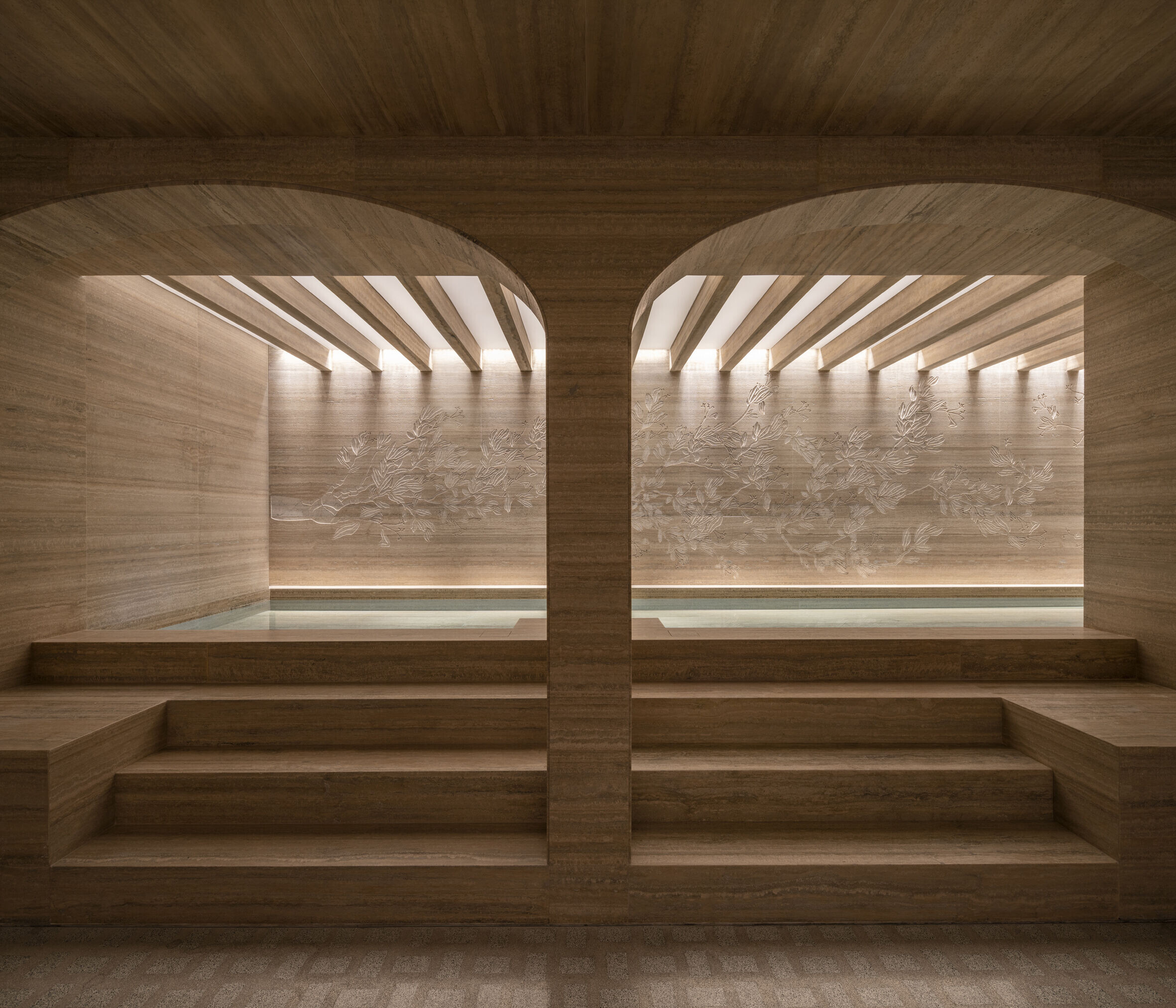
Team:
Architecture: Starching and Professor Paolo Micalizzi
Interior design: Patricia Urquiola
General contractor: CDS Holding
Gallery and restaurant with intellectual property rights: Quaroni-Micalizzi
Photographer: Luca Rotondo
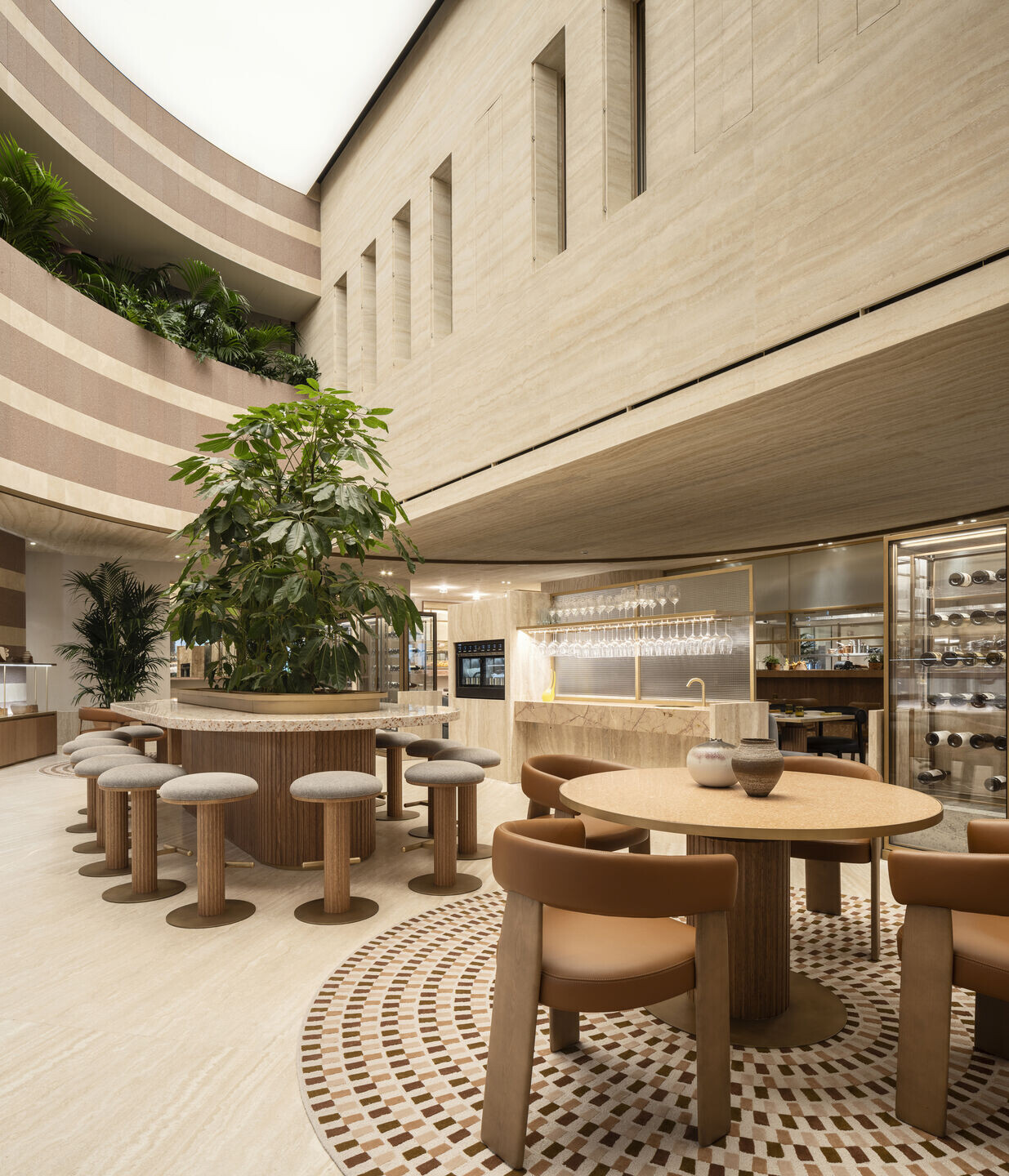
Materials used:
Amount and types of Margraf marble used:
• Travertino Romano Classico: 2,000 m² of flooring and 1,500 m² of cladding
• Cipollino Verde: 150 m²
• Artistic mosaic: 60 m²
• Terrazzo/chips: 80 m²
• Inlays: 40 m²


























